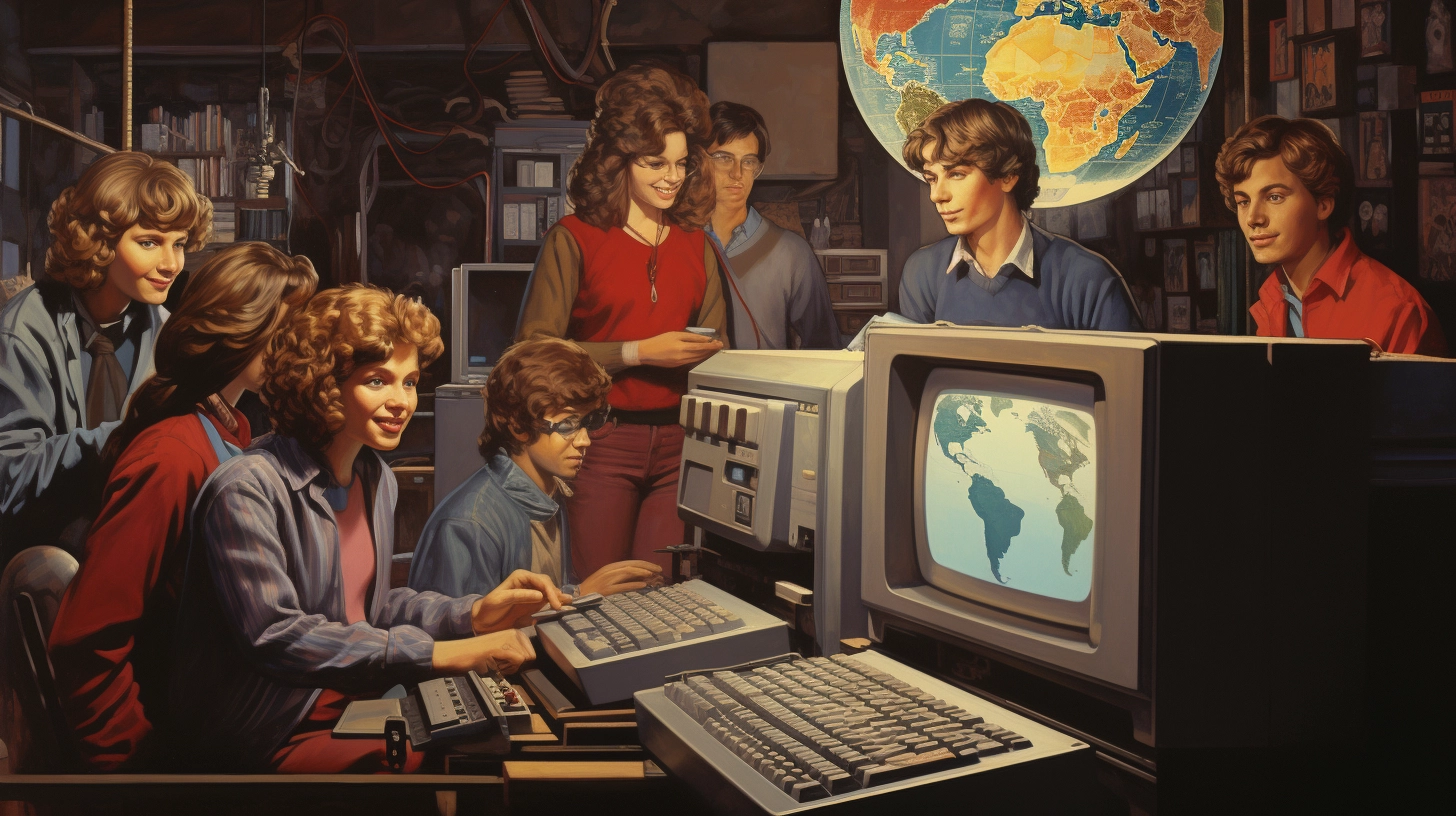Microsoft Windows, the world's most widely used operating system, celebrates its 40th birthday on 10 November 2023. Windows has undergone many changes over the years to adapt to user needs and technological advances. Let's take a look at when which version was released and what was interesting, special, successful or unsuccessful.
Microsoft Windows (1983): The first Windows appears, which offered a graphical user interface for the command-line MS-DOS 2.0 operating system, specifically for large enterprises. Windows had a windowing capability that allowed the user to view independent programs simultaneously. It also provided the ability to transfer data from one application program to another. The Windows was not released for retail sale until 2 years later.
Windows 1.0 (1985): The first version of Windows, which offered a graphical user interface and mouse control for DOS-based computers. Windows 1.0 included programs such as Paint, Calculator, Notepad, Write and Calendar. Windows 1.0 was not very popular because it was slow, used little memory, and was not compatible with much hardware and software.
Windows 2.0 (1987): The second version of Windows, which could display multiple windows at once and allowed resizing and repositioning of windows. Windows 2.0 introduced the Control Panel, Clipboard and Print Manager. Windows 2.0 was a bigger success than its predecessor and supported more applications such as Word and Excel.
Windows 3.0 (1990): The third version of the Windows, which brings significant improvements in graphics, performance and memory management. Windows 3.0 supported 16-color VGA graphics, 386 processors, and up to 16 MB of memory. Windows 3.0 introduced Program Manager, File Manager and Icon. Windows 3.0 was very successful, selling over 10 million copies.
Windows 3.1 (1992): An updated release of Windows 3.0, which includes several new features and improvements. Windows 3.1 added support for TrueType fonts, sound cards, CD-ROMs, networks and multimedia. Windows 3.1 introduced Media Player, Sound Recorder and Minesweeper. Windows 3.1 was even more popular than its predecessor, selling over 15 million copies.
Windows 95 (1995): The first 32-bit version of Windows, bringing a completely new user interface and architecture. Windows 95 introduced the Start menu, the taskbar, Plug and Play, long file name support, the FAT32 file system and Internet Explorer. Windows 95 was compatible with DOS and Windows 3.x applications and supported multitasking and threading. Windows 95 was a huge success, selling over 40 million copies in its first year.
Windows 98 (1998): An improved version of the Windows 95, with several new features and improvements. Windows 98 has better support for USB, AGP, FireWire, DVD and ACPI. Windows 98 introduced Windows Update, Quick Launch, WebTV and Active Desktop. Windows 98 was popular, selling over 25 million copies in its first year.
Windows Me (2000): The last version of Windows 98, focused on home users. Windows Me included several new features and improvements such as System Restore, Windows Movie Maker, Windows Media Player 7, Internet Explorer 5.5 and Windows Messenger. However, Windows Me had many problems such as stability, compatibility, performance and security. Windows Me was not very successful and is considered by many to be the worst version of Windows.
Windows 2000 (2000): The fourth release of the Windows NT family, focused on business users. The Windows 2000 included several new features and enhancements such as NTFS 3.0, Active Directory, Encrypting File System, Internet Information Services, Terminal Services and Windows Installer. Windows 2000 was stable, reliable, secure and fast, and is considered by many to be the best version of Windows.
Windows XP (2001): A merger of the Windows 2000 and Windows Me, focused on both home and business users. Windows XP included several new features and enhancements such as the Luna user interface, Fast User Switching, ClearType, Remote Desktop, Windows Firewall, Internet Explorer 6, Windows Media Player 9 and Windows Movie Maker 2. Windows XP was very successful, selling over 400 million copies. Windows XP was the longest supported Windows version until 2014.
Windows Vista (2006): The successor to Windows XP, which included many new features and improvements, such as the Aero user interface, Windows Sidebar, Windows Defender, Windows Search, Internet Explorer 7, Windows Media Player 11 and Windows Movie Maker 6. Windows Vista, however, had many problems, such as hardware requirements, compatibility, performance, security and user permissions. Windows Vista was not very popular and is considered by many to be the second worst Windows version after Windows Me.
Windows 7 (2009): An improved version of Windows Vista, which included many new features and improvements such as Superbar, Jump Lists, Libraries, HomeGroup, Windows Touch, Internet Explorer 8, Windows Media Player 12 and Windows Movie Maker 2.6. Windows 7 performed much better than Vista and became a favorite of many users. Windows 7 was very successful, selling over 630 million copies.
Windows 8 (2012): The successor to Windows 7, with a radically new user interface and architecture. Windows 8 introduced Modern UI, which offered a tiled home screen and full-screen applications. Windows 8 supported touchscreen devices, the Windows Store, Internet Explorer 10, Windows Media Player 13 and Windows Movie Maker 2.7. However, Windows 8 received a lot of criticism because users did not like the new interface and missed the Start menu. Windows 8 was not very successful and sold only 200 million copies.
Windows 8.1 (2013): An updated version of Windows 8, which included several new features and improvements such as the return of the Start button, resizing of tiles, support for multiple monitors, Bing Smart Search, Internet Explorer 11, Windows Media Player 14 and Windows Movie Maker 2.8. Windows 8.1 was better received by users than Windows 8, but was still not very popular.
Windows 10 (2015): The successor to Windows 8.1, which returns to the traditional desktop interface but retains the Modern UI. Windows 10 introduced the Cortana digital assistant, Edge browser, Continuum mode, Windows Hello biometric identification, Windows Ink digital pen, Windows Mixed Reality virtual and augmented reality, Windows Store, Internet Explorer 12, Windows Media Player 15 and Windows Movie Maker 2.9. Windows 10 was a huge success, selling over 1.3 billion copies.
Windows 11 (2021): It was released as the successor to Windows 10, which brought a new user interface and architecture. Windows 11 introduced the center-aligned taskbar, floating windows, Snap Layouts, Snap Groups, Widgets, Teams integration, support for Android applications, Auto HDR, DirectStorage, Windows Store, Internet Explorer 13, Windows Media Player 16 and Windows Movie Maker 3.0. Windows 11 is still fresh and it is not yet known how successful it will be.
So Microsoft Windows has been with us for 40 years and has changed a lot over the years. Windows has always tried to keep pace with technological developments and open up new opportunities for users. Windows will continue to innovate and create new versions in the future.


